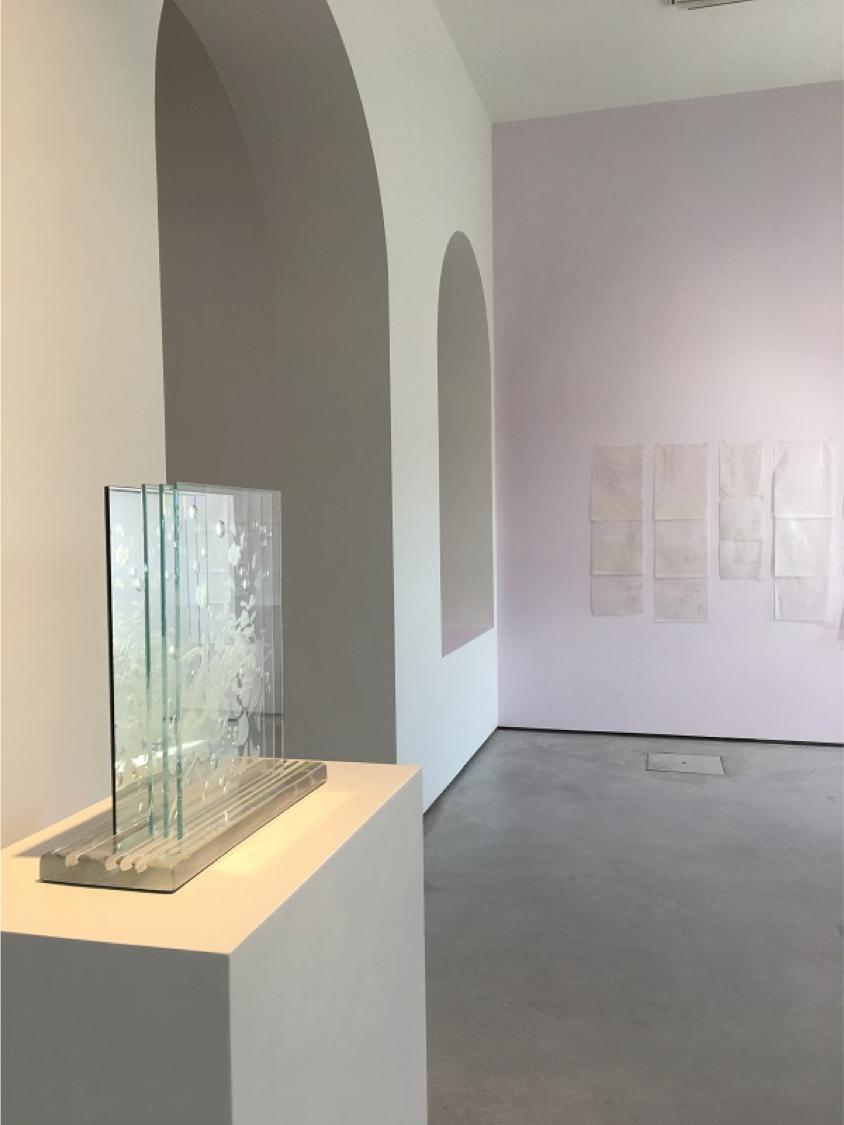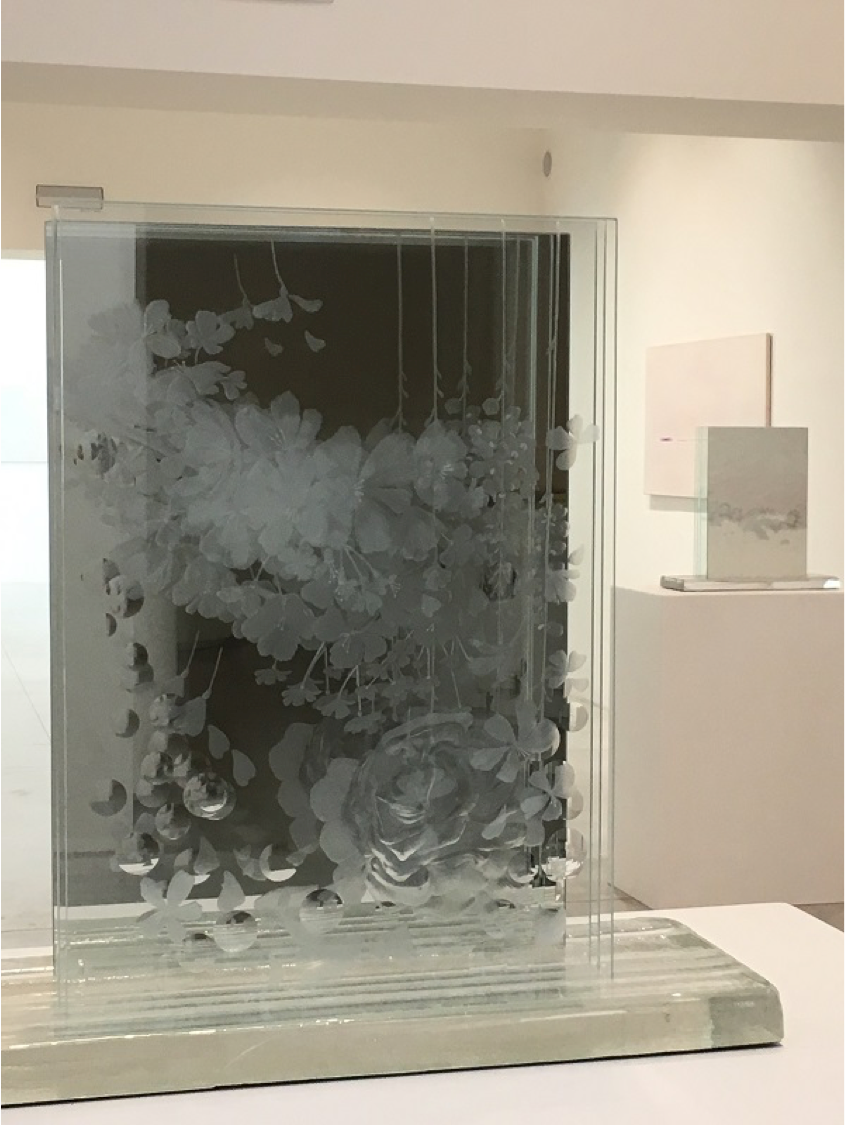GARDEN FRACTURE / MIRROR IN VAPOUR: PART 2 // ROSSLYND PIGGOTT
September 30th - December 3rd 2017

Garden Fracture / Mirror in Vapour: Part 2 by Rosslynd Piggott.
Curated by Chiara Squarcina, Francesca Giubilei + Luca Berta.
Location: Museum of Glass - Spazio Conterie, Fondamenta Giustinian 8, Murano.
Opening hours: 10:00 - 18:00, every day.
Museum entrance: standard ticket €12; concession ticket €9.50.
An exhibition in partnership with The Museum of Glass in Murano, part of the Fondazione Musei Civici di Venezia, presenting the work of Australian artist Rosslynd Piggott. This unique exhibition is a visual articulation of Piggott's artistic path dedicated to the exploration of painting and an expanded range of methodologies alongside an investigation of glass as a medium.
During her more than 30 year practice, Rosslynd Piggott has regularly worked with both the image of glass and the medium of glass. The core of her practice is based in painting and spans across multiple mediums employed according to concept and felt response to materiality and technique, such as glass, mirror, fabric, found and historical objects, air, perfume, metals, paper, and jewels. Photography and video also play a vital part in the research and the finished works. Since her first approach to glass, Piggott was interested in the metaphysical potential of the material and the idea of glass as a vessel. Furthermore, she was captured by the beguiling and elusive physical properties, in particular transparency and the interaction with light. Glass has continued to be an important material within her artistic practice often due to its paradoxical qualities simultaneously withholding and revealing, capable of maintaining both a solid and fluid form, with the capacity to evoke a sense of multiplicitous space. For a painter who works with many layers of fine transparent paint, glass has an immediate relationship to this physicality.
In 2011, after various experimentations with glass produced in Australia, Piggott arrived in Murano to work on a new project that was centred on a collection of air. For this work nine vases were realised, each with a florally inspired glass stopper, containing various samples of air collected from the famous Garden of Nymphs. Between 2012 and 2013 Piggott began to regularly visit Murano and collaborated with the master engraver Maurizio Vidal from the Ongaro e Fuga studio. The new works that were created as a result of this partnership were often accompanied by delicate floral designs in which images slowly dissolve until they disappear and fade into translucent white cellulose. The drawings on paper are both the predecessors and the continuations of the glass works, with very slight almost imperceptible pencil strokes representing the consistency of the sharp stone wheel gently translating the images onto the glass.
The discovery of glass engraving and the artisanal mastery of Murano paved the way for further series of works composed of an unusual and fascinating stratification of glass plates engraved with botanical images superimposed in several layers. Beneath the plates lies a mirror resulting in a captivating multiplication of the images and an enchanting play of light. Etched glass and empty space alternate, and the mirror provides a backdrop that doubles the floral scenes creating an almost vertiginous element as well as presenting a reflection of the viewer, albeit ambiguously distorted. Mirrors have maintained a role of primary importance in Piggott’s work, particularly when the surface becomes marred by time as the process of oxidisation renders the material and its reflection mysterious and obscure. In accordance with this theme of transformation and ambiguity, the artist has produced numerous distorted mirrors whilst in Australia, characterised by unique surfaces that appear both cloudy and almost liquid.
The series Garden Fracture / Mirror in Vapour also contains works which explore the reflective and refractive nature of glass as it toys with the viewer’s gaze, inviting it in one moment only to bounce it back the next. The eye is captured by a myriad of curved petals that lie in front of a branch scattered with blossoms of wisteria, whilst cherry blossom petals softly fall to the ground amongst the voluptuous blooms of peonies. Visions multiply in a beautifully chaotic garden that absorbs the viewer, transporting them away from themselves.
Piggott is not a glass artist. She comes to the material of glass with an fascination as an artist, whose work which is founded upon painting spills over into other materials in possessing an evocative relationship of spatial and sensorial configuration. Her work carries you into a timeless and limitless world, a space for the imagination and the intangible, for wonder and joy, where everything returns to the fracture between the self and the non-self.









